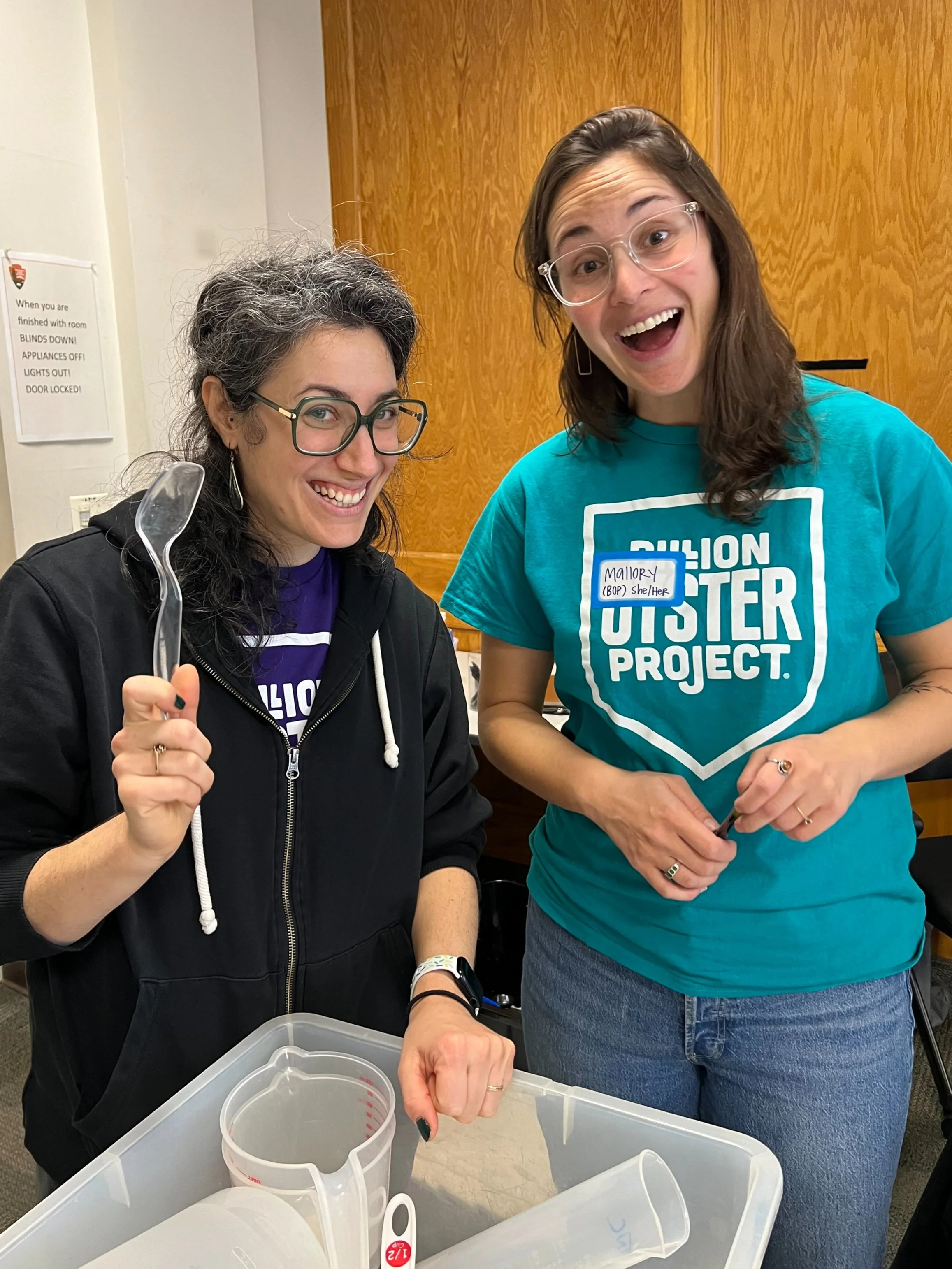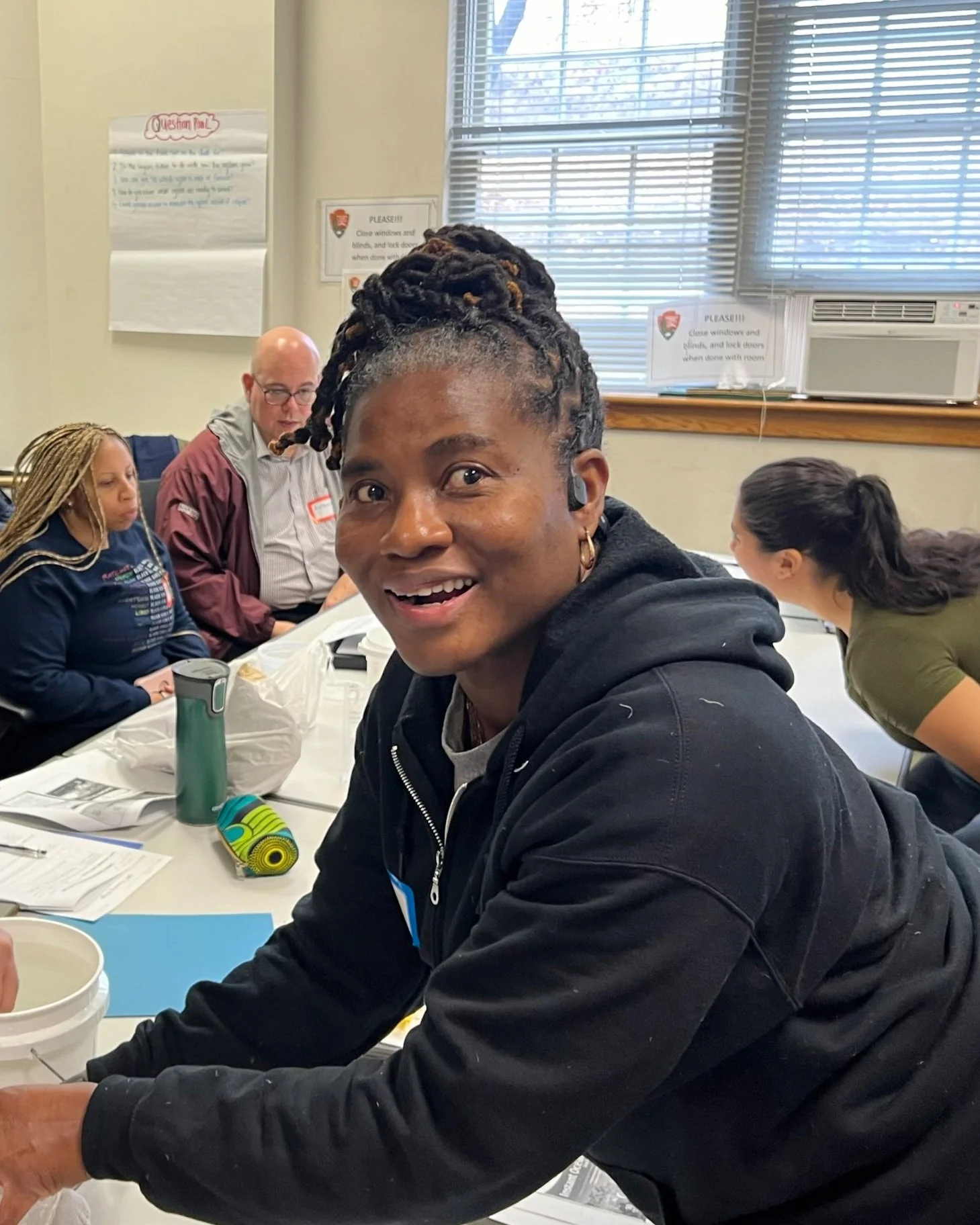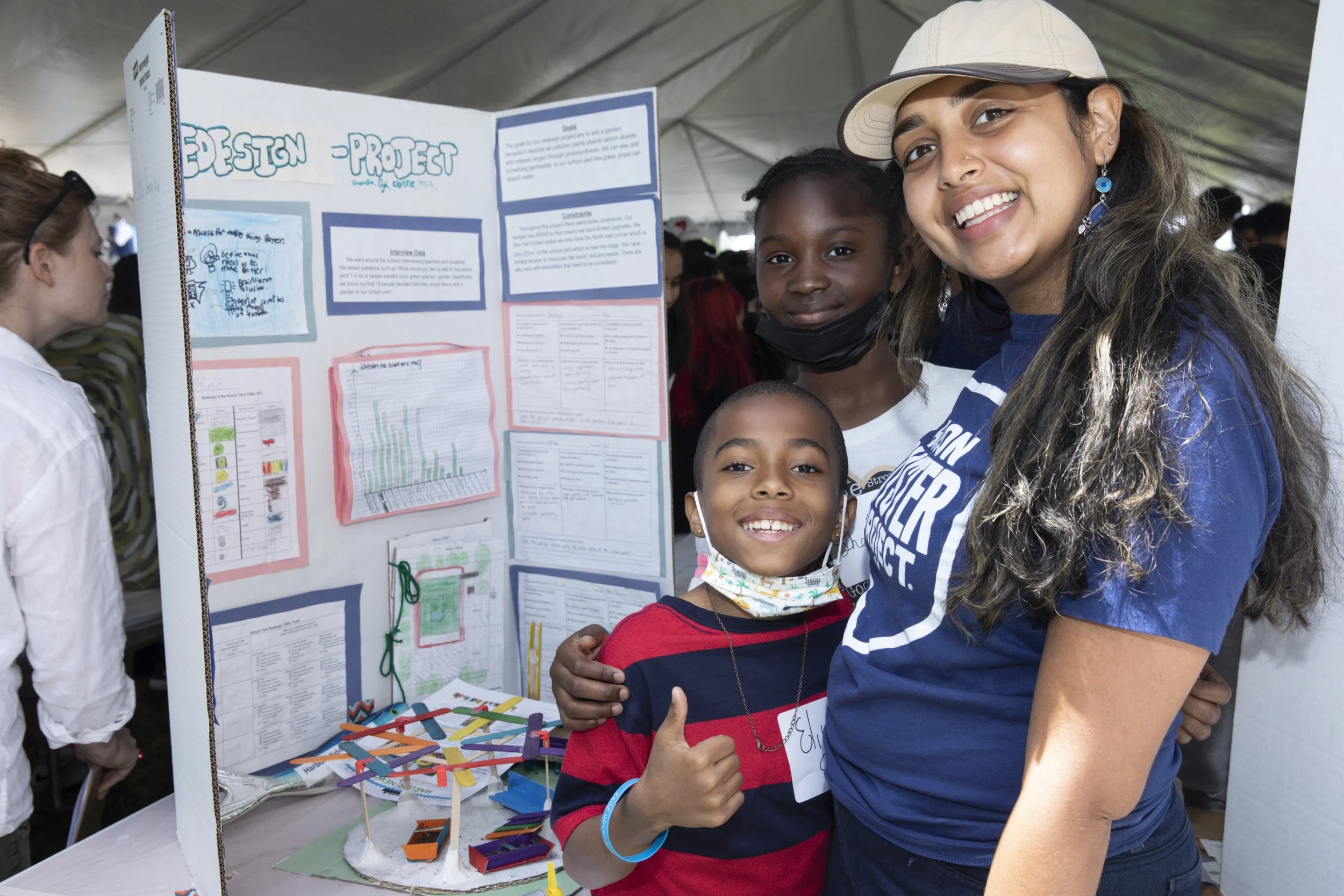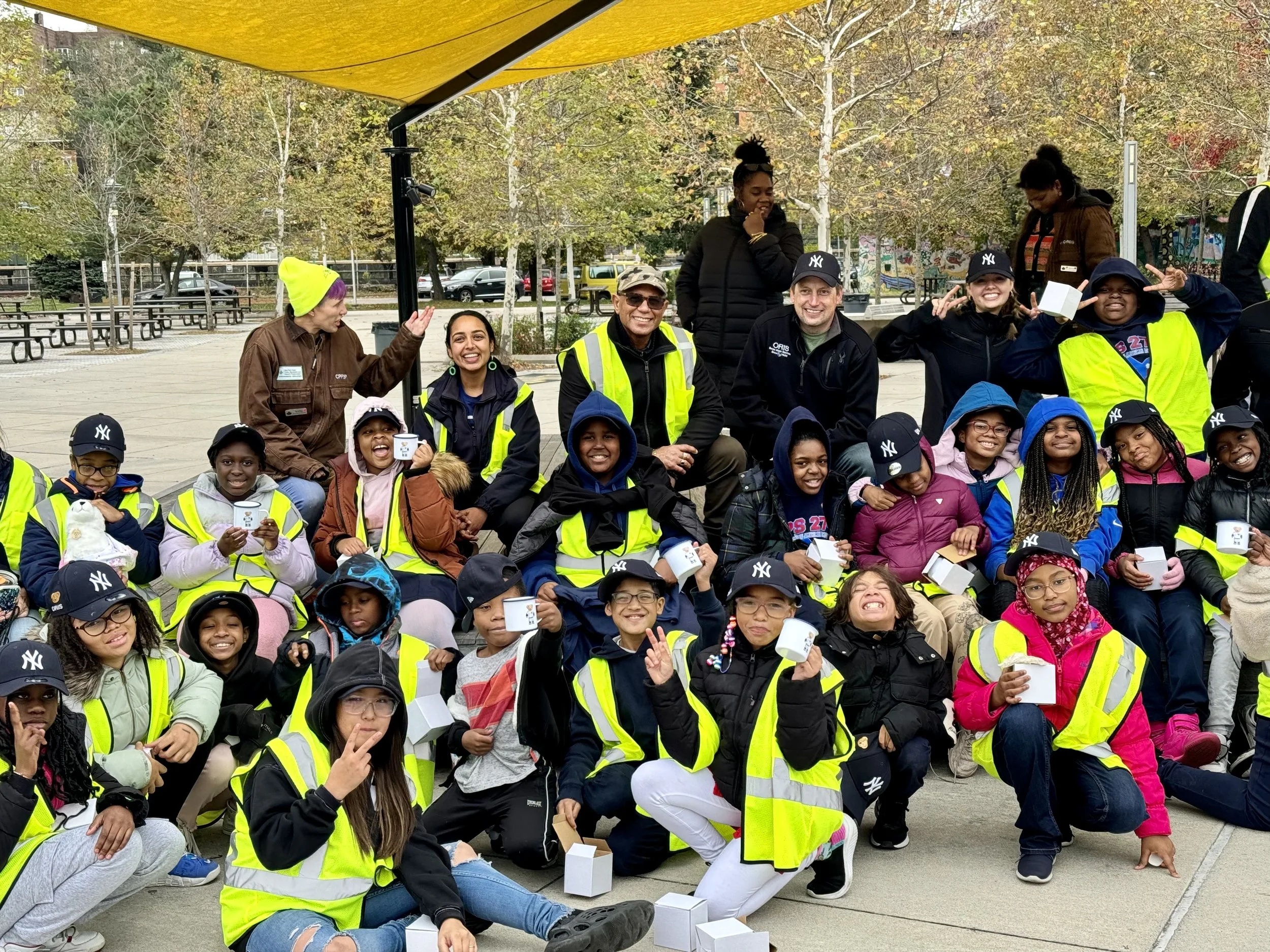Bring New York Harbor to Your Classroom
/Learn how to take advantage of our free & low-cost STEM-based and NYC waterfront education resources and embed them within your classroom and school.
“From the field experience to holding oysters, and being scientists who track data, monitor the oyster research tanks, learn about new organisms, think about New York Harbor in new ways, and see how close it is to where we live—every part of my journey with Billion Oyster Project has felt valuable for my students and me.”
Our experiment to restore New York Harbor began with teachers and students in a classroom at New York Harbor School. Ann Frailoi, our Director of Education, has been with us since our early days:
“Billion Oyster Project grew out of a small, dedicated group of staff and students at New York Harbor School, a public high school focused on marine and maritime career programs. We knew that a real-world, hands-on project would be an invaluable part of the students' career studies, providing key skills and workforce development opportunities.”
Ten years later, over 40,000 students and 680 teachers have contributed to, participated in, and co-created our restoration efforts—one billion oysters with one million people by 2035—including our open-source curricular resources and youth marine education.
Through our Education Program, our vision is to help New York City teachers and students bridge connections between our urban landscape, busy, tech-saturated lives, and NYC as one of the greatest cities with a thriving harbor ecosystem—in the world. Our team, many of whom are former teachers, have designed our resources to create space for students to become and practice as scientists and restoration practitioners. We’ve found that oysters, as the most adaptable species, can uniquely support learning across multiple disciplines, subject topics, and learning abilities. We’ve created a free K-12 STEM curriculum for all teachers to access from diverse starting points.
“Oysters can be a good inroad or phenomenon for learning and teaching about different content. You could be coming at it from lots of different directions. For example, you could teach elementary school students about living things through the lens of New York Harbor. Or maybe you’re teaching the Indigenous Lenape unit in fourth grade or ecosystems in sixth grade. If you teach chemistry, we have water chemistry lessons. If you’re studying food systems, you can teach how oysters create habitat that allows for biodiversity and complex food webs.”
As a New York City teacher, you can take advantage of our various resources and opportunities. Our training is low-cost and free of charge for all teachers at Title 1 schools. This includes:
Professional learning, like Teaching in the Field. Teachers can receive CTLE credit for any professional learning with us.
Free, online K -12 STEM curriculum with lots of adaptable activities, like our Ecosystems Engineer unit
Host a live Oyster Research Tank in your classroom. (Don’t worry; we will provide everything you need, including the oysters !)
Field expeditions to an Oyster Research Station at your local waterway (Check out where the nearest is to you)
Our annual Billion Oyster Project Student Symposium (Register now for May 30th!)
One-on-one support and guidance from our staff, many of whom are former teachers.
A growing network of New York City teachers who support one another in bringing the waterfront to their classrooms
“From the field experience to holding oysters, and being scientists who track data, monitor the oyster research tanks, learn about new organisms, think about New York Harbor in new ways, and see how close it is to where we live—every part of my journey with Billion Oyster Project has felt valuable for my students and me,” shares Leah Rose Rotkin-Ellman, 6th grade science Teacher from Arts & Letter 305 United in District 13 in Brooklyn.
Leah Rose has participated with us for over two years, taking advantage of multiple professional development days and hosting student field trips on Governor's Island.
“We all benefited from seeing science as it is, collecting data and making mistakes, trying again and hypothesizing why, and creating theories. Students also saw that some oysters did not do well in the Oyster Research Tanks, so that part of being a scientist really helped students to embody it,” says Leah Rose.
As a result of engaging with our STEM-based resources and hands-on marine learning at varying levels, Leah Rose and other participating teachers have experienced the following behaviors, benefits, and outcomes in their classrooms:
Practicing Scientific Skills
From collecting data, tracking oyster health, and monitoring water quality, our curriculum and activities support practical scientific learning for your students. All of our curriculum is flexible and customizable. Our team has crafted units that can be used as is or adapted to meet the needs of your students, and support your benchmarks and standards.
Jae Berlin, a science teacher at International High School at Prospect Heights, was referred by a colleague who participated in our Oyster Research Tank training. Quickly realizing the value of integrating our environmental science curriculum into their classroom, each of them set up oyster aquariums as they co-planned their ecology unit. Immediately, they found a way to introduce oysters into the mix. Students started the school year by practicing the scientific method using our recycled oyster shells to make observations and inferences and practice measurement skills with calipers. Their classroom lessons enticed and prepared students for a field expedition to one of our Oyster Research Stations at Brooklyn Bridge Pier later in the fall, expanding students' understanding of the coastal ecosystem.
“Many of our science lab activities in class led to our trip to the pier at Brooklyn Bridge Park. That excursion has become a beloved annual tradition, with 10th graders demanding to know what date we're going during the first weeks of the fall semester and excitedly telling ninth graders what to expect,” shares Jae. “We were thrilled to bring our students back again to Governor's Island in the spring for our first student symposium, too.”
Bringing New York Harbor to Your Classroom:
“So much with science can be disconnected from what's happening in the real world. For me, science is all about making sense of the world around us and being able to frame what students are learning about that's right in their neighborhood, community, or city,” says Mallory. “What’s especially cool about our Oyster Research Station and Oyster Research Tank programs is they make the invisible or the harder-to-see much more visible.”
For teachers who may be wary of what it may take to establish an Oyster Research Tank or other marine life education in the classroom, Leah Rose assures that our teacher community will be there to learn alongside and support you. Plus, as a participating teacher, we provide you with everything you need, including our NYC teacher community.
“Just like all students, it's a learning curve to have oyster research tanks in your classroom, but you'll have plenty of support. It's okay to make mistakes. The value of going to Billion Oyster Project’s professional development days is learning from other science teachers and seeing what other districts or sixth-grade teachers are doing in the same district. The community building during the professional development days was also really beneficial.”
Having the resources and support she needs from our team has brought ease to Leah Rose as a teacher and joy in her classroom.
“This support from Billion Oyster Project [to teachers] is a gift to the community. The delight and noises that students make getting to hold oysters and learn about something they've never learned about before—this work brings joy to my students.”
Experiencing Real-Time Community Science
We hear it more often than we’d like: many of our teachers have witnessed their middle and high school students experience New York Harbor and its marine creatures for the first time during their waterfront field trips. That’s exactly why we designed our Oyster Research Stations program—to provide students with an opportunity to get hands-on experience with community science at their local waterways.
“Every visit [to Brooklyn Bridge Park Oyster Research Station] has reaffirmed for me how important it is to get outside with students and connect what we're learning about in school to the world around us: the natural world, the issues our local and global communities are facing, solutions being developed, and potential careers they could consider as they graduate and want to join in some of these solutions,” explains Jae.
Bridging the Connection Between Science, History & One Another
“We used the oyster to tell the story of the local ecology of Brooklyn, leveraging our students’ interest in this curious creature to exemplify concepts such as food webs, predator-prey relationships, and human impact on the environment,” explains Jae.
Taking it one step further, Jae also found the opportunity for the students to celebrate their cultural diversity and origin stories, learn about other biomes, and build friendships. They were encouraged to use the concepts and language they'd learned about oysters to tell the story of the ecology of a biome from where they lived before moving to the United States.
“Students shared stories and knowledge of organisms from around the world using the frameworks they had built by studying oysters, and they were so happy to learn from each other about so many important stories of their past,” shares Jae.
Practicing Leadership & Listening Skills:
Whether practicing as community scientists in the classroom, at an Oyster Research Station, or our annual Student Symposium, students learn how to lead, co-create, listen to one another, and try out different roles.
“Pulling the oysters out of the Harbor is valuable. Students like the hands-on marine learning. They like being a leader in their group,” explains Leah Rose. “The students who want to get their hands dirty are not always who you expect. Some students are fascinated by the marine creatures, some excelled at species ID, and others excelled and wanted to use the ropes and pull up the cages.”
Our curriculum supports students with all learning abilities, and we’ve found that by exploring different “jobs” in the scientific process, students build confidence and peer-to-peer learning and collaboration.
“Taking students out into the field can be overwhelming and requires pre-planning and logistics. But when students have a job they are invested in, like creating a site map, making observations, or identifying species using our Species ID Guide, they practice leadership and co-learning. It’s important to get their buy-in by giving them tangible tasks and roles grounded in scientific inquiry,” explains Mallory.
Navigating Climate Anxiety & Giving Space for Hope
Many NYC students express concern about climate change and have directly experienced its impacts, including the year when New York City schools closed when wildfires impacted air quality. Jae, for one, was looking for solutions-based, scientific framing to speak about climate anxiety, climate impacts, and the disproportionate ways Black and Brown communities are affected by the climate crisis.
“Billion Oyster Project doesn’t only present the problem. They also present solutions. Students know that oysters calm the waves and clean the water, which is a reason for hope that stays with them,” shares Jae.
Jae witnessed their students experience hope when learning how oysters and oyster reef restoration can help mitigate some of the impacts of the climate crisis. Through our STEM-based curriculum, Oyster Research Tank, and hands-on experiences at Brooklyn Bridge Park, Jae’s students now understand the biology of oyster filtration, the behavioral adaptations of oysters, and how oyster reefs can calm waves during storm surges.
“The most valuable part of my participation with Billion Oyster Project is the space for hope it gives my students when learning about challenging concepts in this world,” shares Jae.
Thank you to Jae Berlin and Leah Rose Rotkin-Ellman for sharing their stories, and every teacher who has brought our urban estuary, New York Harbor, and all of its beauty alive in their classrooms.
Learn more about our Education Program and professional learning opportunities. Access our free online K-12, STEM curriculum and classroom resources with over 80 lessons organized into project-based units. Register your students now for our 11th Annual Billion Oyster Project Student Symposium on May 30th.







